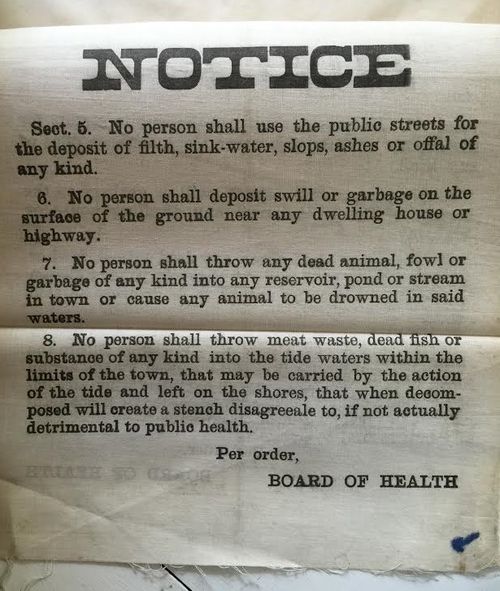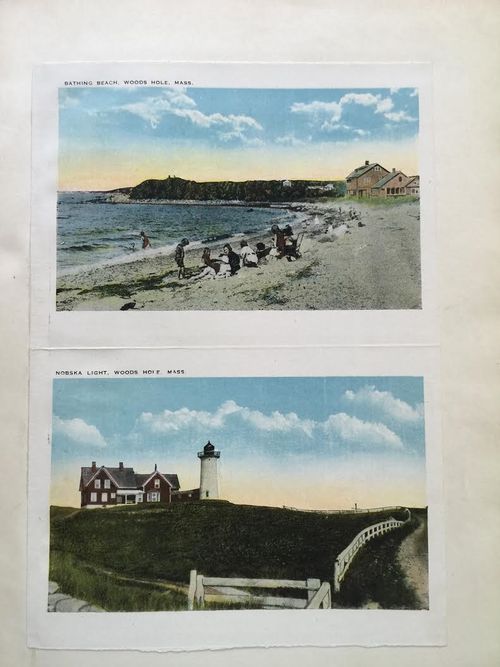JF Ptak Science Books Quick Post
Graeser, James Bernard. A Sanitary Survey of Woods Hole. No title page, no publishing information (the author's name and title provided in a librarian's note). 10x8", 60 leaves (printed on one side only), folding topological map; illustrated with five postcard-like images, including a 15x5" folding panorama birds eye image of Woods Hole. Also included is a 12x10" vintage (and possibly original?) health notice (described below) printed on cloth, bound in at end and folded in half. The document seems to be an original or carbon copy typed document. The whole is bound in cloth and marbled boards. Provenance: Army Medical Library of Washington, D.C. (with the original bookplate), also with barcode sticker for the National Library of Medicine; at some point the book was sent to the Library of Congress, and then purchased by me. The spine has the title printed in gold along with the date at the spine foot. There is an old printed shelf label at spine foot; the front free endpaper is detached, and the rear free endpaper is missing. That said, a pretty nice copy. This work was evidently published in a different format in the same year by Harvard University, in 120pp. Scarce. $750
There is a warehouse of boxes of books set into rows, and at the back of a row of boxes is a column of boxes, and in the bottom box of the column at the bottom of a stack of books sat the unpromising-sounding "A Sanitary Survey of Woods Hole" (1926). Woods Hole (in Barnstable County on Cape Code) as most people would know it today is the home of the largest privately-funded oceanographic research institution in the U.S. (organized in 1930), though when this report was written in 1926, it was still a fairly sleepy resort town for the privileged of Boston and NYC.
The report (written by James Bernard Graeser) is pretty much as it says, including a social health history of the small town. But tucked away in the back of this typescript is what seems to be an original health notice (printed on cloth) outlining what people should not be throwing into the ocean and harbor. It uses some surprising language--at least to the 21st century reader--which is a little on the disturbing side, though there would not have been a need to print such a poster and put it up around town if there wasn't a need.
Strong stuff. "...(O)r cause any animal to be drowned in such waters"?
The ironic part of this is that one of the areas referenced is Penzance Point, which was a wealthy summer home development, and which had been built on the site of the Pacific Guano Company (bust in 1886), "which produced fertilizer from guano imported from islands in the Pacific Ocean, the Caribbean, and the coast of South Carolina" (Wiki)





Comments